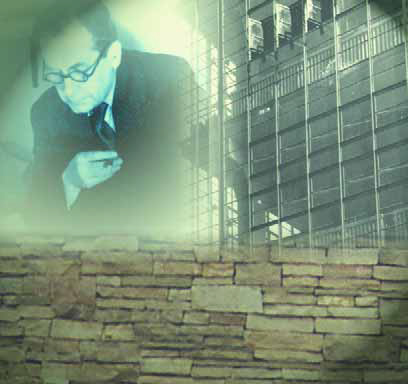spa design
For me, the simplicity and elegance of the International Style was just about the best thing going in 20th-century design. The followers of Walter Gropius in the Bauhaus movement held this simplicity - expressed as a cleanness of line, a uniformity of materials and the establishment of clear relationships among architectural planes - in absolutely the highest regard. I always try to integrate these design principles into my own work - and one of the ways I do so is through the ledger detail we'll examine this time around. It's an expensive
Whether you build fountains, streams or Olympic-size swimming pools, you need to install a pump of some kind to make these watershapes work. As fundamental and essential as pumps really are, however, it's amazing to think how casual many of us in the trade are when it comes to knowing about how they work and how their performance characteristics differ. We've all heard and used terms like "energy efficient," "high head" and "self-priming," but for the most part, the real meanings of those words get lost in the competitive marketing blizzard that surrounds these products. Without a clear understanding of how pumps are designed and how they do their job, these distinctions are no more than words on a label - and that's not the way it should be. As watershapes become ever more complex and hydraulically challenging, cutting through the hype to find out what truly makes pumps work becomes even more important: No matter how beautiful a design may be, without a properly selected and installed pump working at the heart of the system, the best work will fall short in
Good design isn't the sole province of any one country: It's something that happens around the world in response to local flavors and textures and the needs and desires of people who live there. Most of these watershape markets are absolutely minuscule by comparison to the U.S. market - but in each location you'll find clients who are just as interested as their American counterparts in commissioning watershapes that reflect high aspirations, suitable affluence and
The first thing I tell myself when looking at a prospective job site is that the pool is unimportant. That may sound strange coming from one who has spent years of his life in designing and building the finest pools money can buy, but in a very real sense, I think it's absolutely true: The pool itself means nothing. What's important is the site, its prevailing geological conditions, the visual strength and influence of the house or other structures and the natural elements of landscape and physical setting. All of these directly influence the design of the pool - its shape, size, elevations, materials and position on the property. When all of these elements of the pool's physical structure come into balance with the surroundings, then the experience of someone entering the area can be utterly transforming: They will draw impressions of beauty, elegance, relaxation, tranquillity and even a distinct connection with nature. You're off to a good start simply by recognizing this potential. To maximize it, however, you need to
Of all the features associated with inground swimming pools, attached spas almost certainly have the most complex designs. Achieving proper hydrotherapy-jet action requires the interweaving of air lines, water lines, fittings, jets and associated pumps, blowers and motors in a way that delivers results the customer wants and expects. And making mistakes is definitely costly: Once the plumbing is set in concrete, there's no easy way of turning back. The bottom line: You have to get it right the first time! Yes, you can adjust inground systems, but it usually involves ripping out expanses of decking and chunks of the spa shell at the very least - definitely not activities that breed customer satisfaction. It's a high-stakes game, but all too often I see pool builders take an ill-advised roll of the dice by not doing the work ahead of time to make sure the
With just a few weeks to go before our work was to begin, I took my wife Denise to visit the historic pool at the Biltmore Hotel in Coral Gables. I wanted to take a long look at what was (and may always be) the largest re-plastering job I'd ever landed. As I stood at the edge of what can truly be described as a huge pool, I actually thought for the first time in my career that I'd bitten off more than I could chew: The surface of the massive U-shaped pool was in terrible shape and dragged down the hotel's otherwise beautiful decor and landscaping. Yes, it was the kind of prestige job I'd always wanted, but it only took a few minutes for the enormity of what I had undertaken to
One certainly emerges from all the discussions that have taken place about swimming pool plaster over the past several years: The product has had plenty of room for improvement. Among the complaints has been that traditional white-plaster pool finishes simply haven't kept pace with the rising expectations of owners, who increasingly want their pools, spas and waterfeatures to be entirely forgiving when their lifestyles limit the time they can spend on maintenance and upkeep. In that environment, in fact, traditional
How far we've come since the days of the lazy L, the kidney and the rectangle! During the more than 30 years I've been part of the pool industry, I've witnessed mind-boggling advances in the designs of swimming pools, spas and watershapes of all types. Especially in the past 10 years, the ideas, creativity and workmanship found in residential backyards far surpasses what we saw or even dreamed of 20 or 30 years ago. Back then, you'd have to go to a movie set or Las Vegas to see the exotic designs we are seeing today. I'd even say that today's designers are turning backyard pool environments into





















